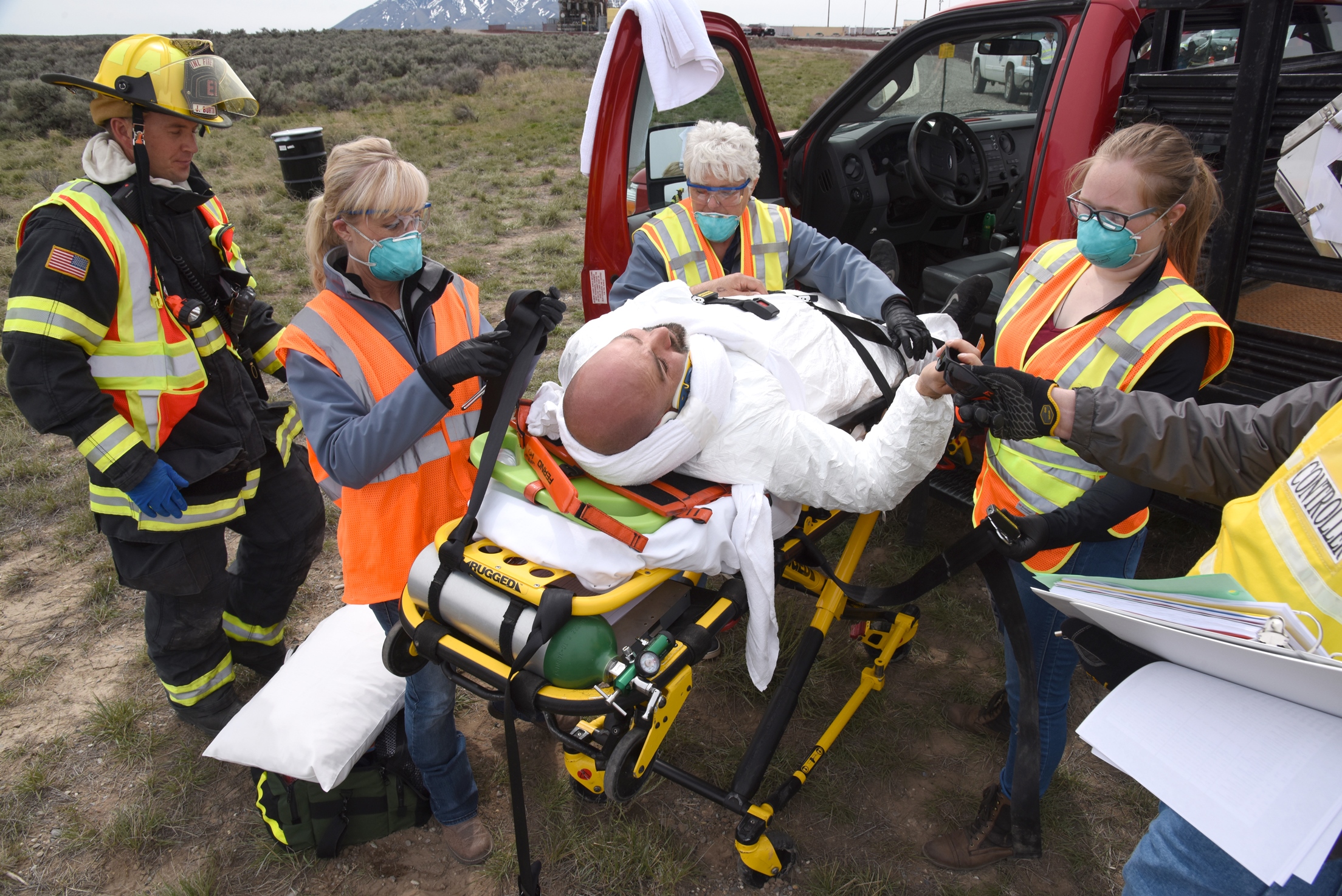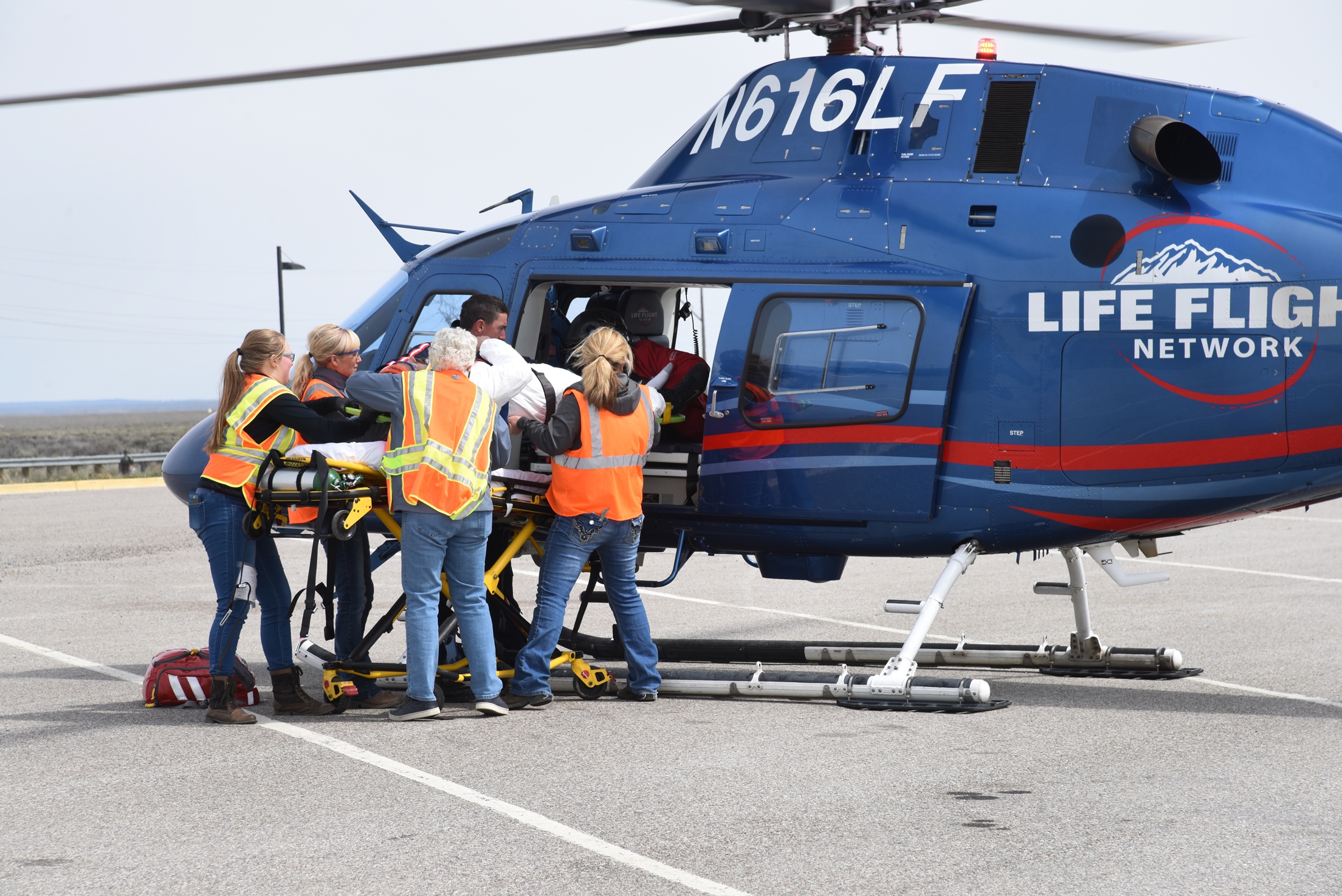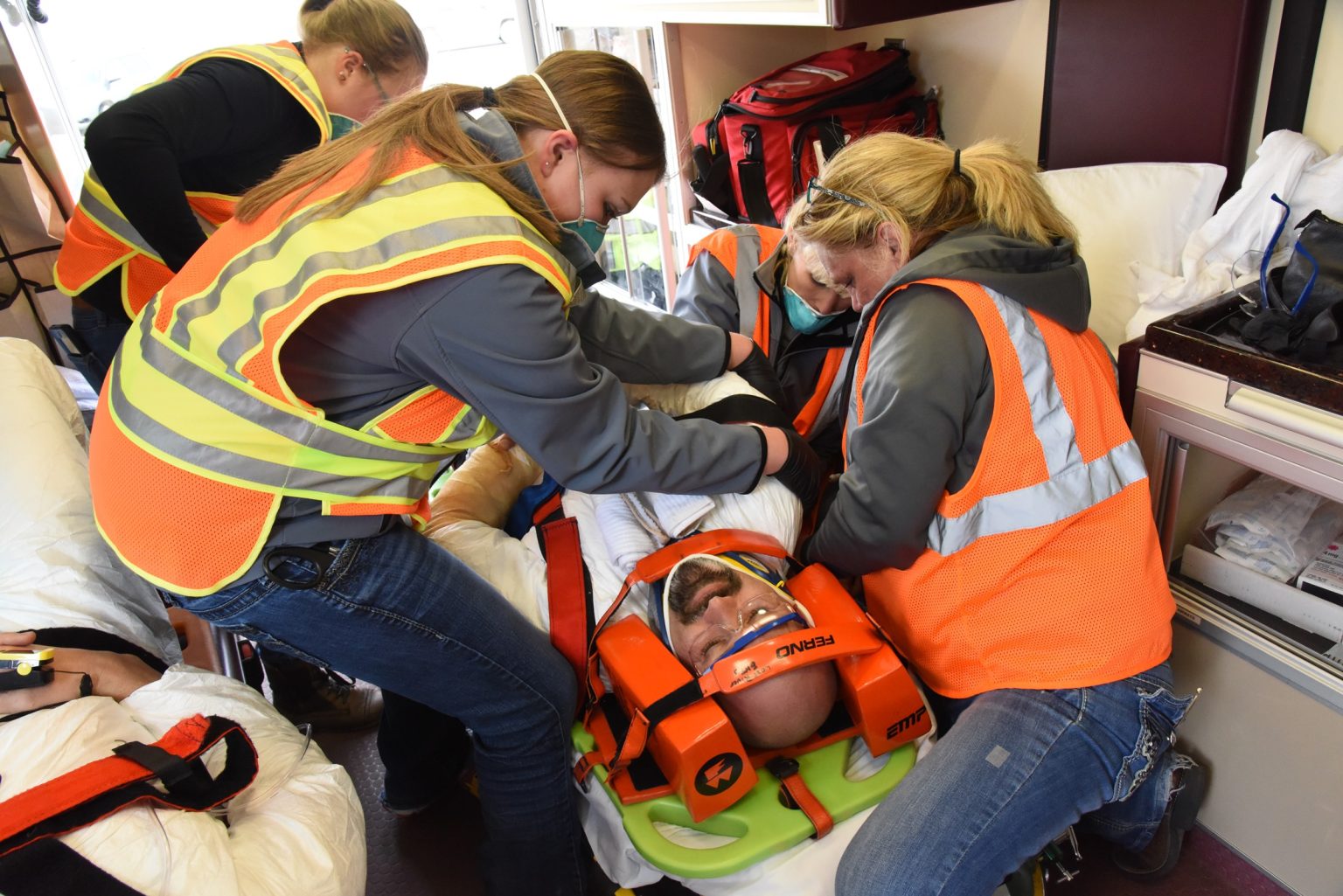The partnership between Butte County and Idaho National Laboratory got put through its paces on April 11. Emergency management people from both the county and INL staged a mutual aid drill on an isolated road near Experimental Breeder Reactor-I.
Anyone driving past the historic reactor that afternoon might have wondered what all the flashing lights were all about. On hand were the INL and Arco fire departments, Lost River EMS, INL security, Butte County sheriff, and state police.
The drill had been in the works since fall 2016, when Butte County approached INL Emergency Management. INL has more than 20 mutual aid agreements with cities and counties surrounding it. The planning started in earnest in November, said K.J. Babcock, Butte County Emergency Services director, who worked with INL Emergency drill director, Scott Barnes.

No Idaho county is more enmeshed with INL than Butte County. Nearly a quarter of its 2,234 square miles lie within the DOE Site’s boundaries. Just over 60 percent of INL’s 890 square miles are in Butte County.
From time to time, INL’s fire department will respond to calls in Arco and rural parts of the county. Likewise, Arco’s volunteer firefighters and equipment have been called to help fight sagebrush fires on INL land.
Devising a drill in which Butte County would take a central role required a special scenario. The teams decided that there would be a simulated situation at another location on the INL Site already engaging most of INL’s emergency resources. In the middle of this, a pickup truck carrying drums of spent sulfuric acid and old batteries would hit an elk and roll on U.S. Highway 20-26 near the Big Lost River Rest Area, trapping two men inside. The drums would have been thrown out of the truck bed, and one would be on its side, leaking. A fire would start in the sage brush.

The people planning the drill met for a “tabletop” session in March to anticipate any hazards that might come up and forestall any safety or security issues. They decided to move the proceedings off the highway. Otherwise, everything was a go, and at 1:09 p.m. April 11, a 911 call went in to Butte County Dispatch (preceded and appended with “this is a drill,” as were all radio messages). The vehicles began to arrive at the end of EBR-I road about seven minutes later.
The first priority for responders are people, but they must also protect themselves. So the first action for INL crew members was to determine the extent of the hazard from the barrels. The leaking barrel was set upright, the site was deemed stable, and the focus turned to the truck. The Jaws of Life arrived at 1:26 p.m., and by 1:55 p.m. the two victims, Arco EMTs and ambulance were on their way to the rest stop for a rendezvous with Life Flight Network, which arrived around 2:15 p.m.

The purpose of these drills is to develop “muscle memory,” said Mark Stephensen, southeast area field officer for the Idaho Office of Emergency Management, who was on hand to observe and report back to the Butte County Commission. Counties are required to perform two drills a year to maintain grant eligibility.
“If you can get to the point where you don’t have to think about what you have to do next, you’re better off,” he said. “You know what to do because you’ve seen it before.”
The INL Fire Department tests itself often, said Chief Eric Gosswiller, incident commander at the April 11 drill. Drills are a core operation responsibility, and their costs are covered by the department’s annual operating budget. Mutual aid drills are always welcome.

“I believe we met our objectives,” he said. “We see it as a huge benefit for the lab. Getting to know each other, testing communications, practicing critically what we’re here to do.”
Babcock, who was at the dispatch center in Arco the whole time, said the drill turned out as well as he could have possibly hoped. The one glitch was that the ambulance couldn’t seem to communicate with the rescue helicopter. But because of previous times they’d worked together, they were able to coordinate through dispatch.
“The coordination was really good, and people got to meet folks they’d never worked with before,” Babcock said. “I think it was a total win-win for INL and Butte County.”





